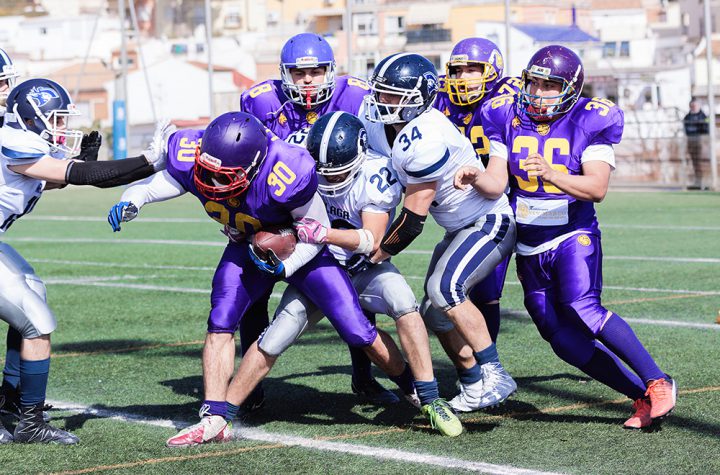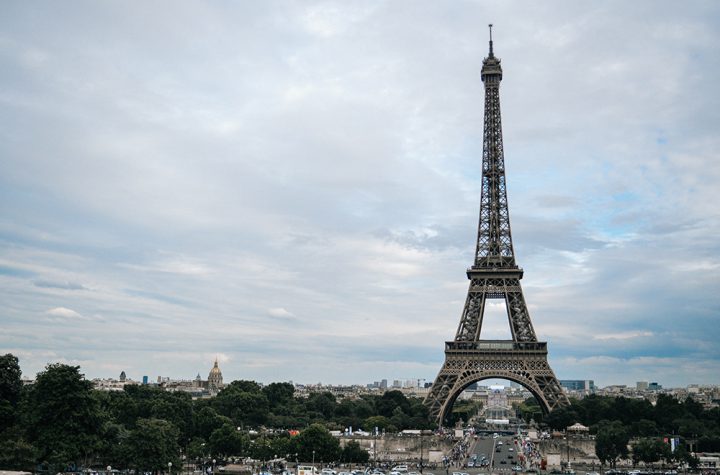
Illustration by CrackerClips
An advance warning gave Ferrari an early start on its comeback
Silicon Valley is happy to stay locked down. Hollywood, not so much
Heathrows CEO worries line-ups could stretch for a kilometre
Can miners really stay apart in the deep underground?
BRP Inc.s business hinges on people spending thousands of dollars on something they dont really need.
So when Premier François Legault announced March 23 that all non-essential businesses in Quebec would be closing down for at least three weeks, the manufacturer of Ski-Doo snowmobiles and Can-Am off-road vehicles knew that meant tools down for its roughly 1,200 factory workers. After all, they crank out what are arguably the ultimate in discretionary products.
At the time, BRP had just emerged from another crisis the rail blockades that forced Canadian National Railway Co. to temporarily close much of its network east of Toronto. Supply of parts became very difficult because we werent able to receive them, says Daniel Martin, site director for BRPs Canadian plant in Valcourt, Que.
Story continues below advertisement
Just days after the blockades lifted in February, BRP found itself in the midst of a fresh emergency. Company executives had a good idea of the coronavirus threat theyd already seen other jurisdictions implement confinement measures, and suppliers in Italy and elsewhere were reeling from work stoppages.
Still, the coup de grace came fast.
Within 24 hours, we literally closed the place, says André Fournier, vice-president of vehicle engineering at BRP. But we had no idea for how long. They announced three weeks, but we knew it could be longer.
When the provincial government allows factories across Quebec to reopen on May 11, some seven weeks will have passed. Seven weeks during which the province has become Canadas COVID-19 hotspot, with more than half its cases and deaths. Seven weeks of a shutdown that has dealt a crushing blow to Quebec industry and brought its multiyear economic boom to an end.
Almost as soon as Mr. Legault announced the shutdowns, his government started working behind the scenes on plans for how to get factories moving again while other provinces deliberately stayed in neutral. In many ways, BRP will be an example for other major Canadian manufacturers of what theyll be facing in the weeks ahead.
The factory floor might never be the same.
A truck loaded with ski doos is seen outside the BRP Inc., plant in Valcourt, Que., on May 30, 2019.
Christinne Muschi/The Globe and Mail
One of the worlds biggest makers of power sports vehicles, BRP was coming off a remarkable run. Its shares had doubled in value over the 12 months to Feb. 19, a rally sparked in part by its better-than-expected profit performance over the previous quarters.
Even as investors fretted about a looming recession, BRP was taking market share from rivals with innovative products that analysts said resonated with consumers. The company was aiming to deliver annual revenue growth of 10 per cent, reaching $9.5-billion by fiscal 2025.
By March, that optimism had faded. Now we know that there will be a slowdown, BRP chief executive José Boisjoli told analysts on the companys March 20 earnings call. The big question is, how deep and how long?
One of the first things BRP did even before Quebec began its confinement measures was to try to protect its own people. Starting at least three weeks before the March 23 announcement, the company put restrictions on outside visitors to its Valcourt headquarters and factory, which together employ roughly 2,000 workers, eventually banning even its Montreal-based employees from the site.
We formed kind of a bubble around our operations, Mr. Martin says. The company sent non-production employees to work from home and introduced measures to limit human contact, including staggering starts between the plants day and night shifts so workers wouldnt cross each others paths.
When the order came to shut down the assembly lines, BRP was already further along in its operational contingency planning than many other companies. But that didnt make it any less painful. The company was almost through its annual production of three-wheeled Can-Am Spyder vehicles and will need to resume manufacturing those motorcycles for several days before switching over to snowmobiles in June.
Stopping a factory in 24 hours is like trying to stop a train in full motion, Mr. Martin says. Parts come from all corners of the world, and some were already en route to the plant via ship, train and truck. BRP had to decide whether to stop the goods that hadnt left yet and figure out what to do with the ones already in transit.
The company initiated what it called a full blackout on the plant, which means no one was allowed inside except security guards and maintenance personnel. It also organized a communication plan with employees to keep them informed of key developments.
Those who were able to work on their computers from home kept working. This was notably the case for BRPs research and design staff. Normally, this hundreds-strong group of creative sketchers toil in a free-flowing, collaborative space in a low-rise building next to the headquarters. (Think big screens and General Grievous Star Wars toys at peoples desks.) Soon they were bouncing around ideas through Google Hangouts and other software. Not ideal, but workable.
Within two weeks, we did what would basically take two years, Mr. Fournier says. It went way better than I thought it would, and using simple [tech] tools. They were all there, all available. We were just not using them to the level that we could.
Meanwhile, the bulk of the companys factory workers found themselves on the employment insurance rolls many for the first time. Though they were generally on board with the shutdown, it still came as a financial shock to some, according to Mr. Martin. Our hourly employees make good money, he says, and for them to go on EI was an adjustment.
BRP followed up with each worker, contacting them every three to five days to ask about their well-being and dealing with cases requiring deeper followups something Mr. Martin considers one of the companys biggest triumphs through the crisis.
Story continues below advertisement
As March pushed into April, BRPs focus shifted to trying to time a restart while preparing its return protocols. Teams raced to secure parts from suppliers in at least 10 countries near and far Canada, the United States, China, Vietnam, Taiwan, Austria each of them subject to their own local directives. The supply chain is made for things to be rolling, Mr. Martin says. Its not made to be stopped and restarted and stopped and restarted.
The task was complicated by a big change coming to BRPs snowmobile production. This year, the Valcourt plant is taking on the assembly of some models previously made in Finland as the factory becomes the main source for Ski-Doos sold in North America. That means the company has to reorganize an entire section of the plant and move it to another part of the facility.
BRP leaders also drafted a new production schedule, planning for various scenarios that were constantly changing before the government announced a final timeline, along with the health and safety rules companies would need to follow.
At one point, BRP received word that May 4 would be the start date, says Thomas Uhr, BRPs senior vice-president of product engineering and manufacturing operations. As the date approached, however, it became clear the government wasnt feeling that secure about the timeline and ended up pushing it by a week. We are not blaming the government for that, Mr. Uhr says. As much as we were, or are, navigating in the fog, the government is navigating in the fog and is reacting to the latest information available, and it tries to adjust regulations and policies around this.
When assembly workers step out of their cars and into the Valcourt factory on Monday, theyll find the place much changed. Instead of the typical handshakes and hugs, the prework ritual will now start with a mandatory temperature check and a questionnaire asking whether theyre experiencing any symptoms of illness.
Story continues below advertisement
Employees will then go directly to their work stations no stops allowed and spend five minutes disinfecting their space and tools.
The factorys inside doors will remain open to avoid touching. At designated stops throughout the 800,000-square-foot facility, employees will have to wash their hands. On the factory floor, everyone will have to stay two metres away from colleagues, and wear either a mask or a visor at all times, even if theres no one else around. The visors are made by Montreal-based clothing maker Tristan and bear the inspirational message Unum Sumus (Latin for we are one) on the forehead.
Not all BRP production workers will be able to maintain two metres of distance. Along Valcourts polished concrete assembly floor, there are several spots where employees working on vehicles cant help but get close, and Mr. Martin insists theyll have equipment to protect their faces.
During breaks, workers on the morning shift will be split into three groups to limit the number of people moving around at once. In the cafeteria, plexiglass dividers will separate diners at some tables, and Mr. Martin says overall seating will be reduced by at least two-thirds. If you cant find a chair, you can get takeout and eat at your work station.
If it all sounds like a highly choreographed military drill, thats kind of the point. Such precision is needed to reduce risk and boost safety, BRP executives say. I think when you come to our facility these days, you are most likely safer than when you go to your neighbourhood supermarket, Mr. Uhr says. We have a very good standard.
One of the stipulations of allowing Quebec manufacturers to reopen on Monday is that companies can have a maximum of 50 employees at each worksite, plus half of their remaining regular shift volume. For BRP, that means a cap of 325 hourly workers at the Valcourt plant, compared with a regular 600-person shift. Companies are free to bring back their entire workforce two weeks later, on May 25.
Story continues below advertisement
BRP intends to take it slow, Mr. Martin says. For the first week, it will bring in a limited team to do prep work, then ramp up to about 50 per cent of output the following week. On May 25, it will restore full production with two shifts.
Many of BRPs white-collar employees, meanwhile, will continue spending part of the week at home for the foreseeable future. No matter what the new rules are when we start, nothing will be like before, Mr. Fournier says. The most complex thing to apply on a daily basis over time is keeping the two-metre rule in everything we do. Were trying to figure out now how were going to do that in a permanent way.
With the rest of corporate Canada closely watching Quebecs reopening gamble, Mr. Martin is adamant that BRP not become the centre of a new COVID outbreak in the province a fate that has befallen other local operations, including pork producer Olymels plant in Yamachiche. The company says only one BRP employee has been confirmed as having COVID-19, right after the March 23 shutdown, and Mr. Martin insists remaining virus-free will become a new operational objective, just like quality and efficiency targets.
The measures go beyond the walls of the plant, he says. They extend to the home, what employees do on the weekend, what measures they take to protect themselves. Because if they get it, they can contaminate their coworkers.
Some things are out of BRPs hands, however, and that includes how consumers behave in the months ahead. BRPs production is based on dealer orders, and the company says projected volumes for new Ski-Doos are stronger than they thought when the COVID-19 crisis began.
Story continues below advertisement
Still, sales will be volatile. Some people need snowmobiles and all-terrain vehicles for work, but most dont. BRPs products are big-ticket items the kind of thing enthusiasts buy when they land a new job, but the first to be sold when financial prospects darken.
Even if BRP does everything right and avoids an outbreak, thats something it cant control.
Your time is valuable. Have the Top Business Headlines newsletter conveniently delivered to your inbox in the morning or evening. Sign up today.
An advance warning gave Ferrari an early start on its comeback
When a team of Ferrari managers returned to Italy from China on Jan. 21 with news of a virus attack in one of the companys biggest markets, the sports car maker began to take precautions
By Eric Reguly, European bureau chief, Rome
Ferrari has installed carpets infused with an antiseptic that cleans the shoes of employees and visitors, and its buying machinery to produce its own masks.
DENIS BALIBOUSE/The Globe and Mail
When a team of Ferrari managers returned to Italy from China on Jan. 21 with news of a virus attack in one of the companys biggest markets, the sports car maker began to take precautions. It might have been the first Italian manufacturer to do so.
Ferrari, whose home region in north-central Italy would get hit particularly hard, ordered masks and placed antiseptic gel dispensers everywhere. It also introduced physical distancing, which wasnt difficult on its slow-moving, low-volume assembly lines the company produces about 10,000 cars a year. The Italian lockdown didnt exempt car makers, and Ferrari closed on March 14. Since then, it has been devising a strategy dubbed Back on Track to restart production and keep its employees and suppliers alive.
Working with virologists, it devised a plan for mass testing of the 2,300 employees (out of 4,500) who returned to its production site in Maranello this week. Jane Reeve, Ferraris chief communication officer, says the serological tests are voluntary and that 95 per cent of the employees have done them. The tests are also available to employees family members and to suppliers, and the results are being shared with local health authorities.
About 1 per cent of employees have tested positive and gone into quarantine. The company is paying for any isolation and nursing expenses.
Ferrari also installed carpets infused with an antiseptic that cleans the shoes of employees and visitors, and its buying machinery to produce its own masks. The goal is to make 150,000 of them a day; any it doesnt need will be given to the local community.
A bigger project is the launch of a tracing app that would be downloaded onto employees smartphones, though Ferrari isnt expecting quick deployment. The app, under development by a Milan startup called Bending Spoons, is the same one chosen by the Italian government for a national tracking platform and would tell users if theyve come into contact with someone who has tested positive for COVID-19 (though its launch is fraught with data abuse and privacy concerns).
By Friday, Ferraris factories were in motion after the longest closing in the brands history, and masked workers were becoming the symbol of Italys cautious revival after its worst postwar economic contraction.
Sign up for the Coronavirus Update newsletter to read the days essential coronavirus news, features and explainers written by Globe reporters.
Silicon Valley is happy to stay locked down. Hollywood, not so much
Working from home is no problem for tech industry, but entertainment sector is desperate to resume close-contact production
By Tamsin McMahon, U.S. Correspondent, San Jose, Calif.
Netflix signed up a record 15.8 million new online subscribers in the first quarter as the pandemic hit, even as it struggled to figure out how to restart its own productions.
OLIVIER DOULIERY/AFP/Getty Images
When California became the first U.S. state to declare a lockdown in March, Silicon Valleys largest tech firms were already positioned to weather the economic storm. Several had started asking employees to work from home back in February.
Story continues below advertisement
It was a different story for another of Californias major industries: Hollywood. The entertainment sector was stunned by the stay-at-home orders that closed movie theatres and halted production on a busy season for film and television.
Now that California is taking its first steps toward reopening, the two industries are charting different courses.
In Silicon Valley, theres no rush to bring employees back to the office. Even before the pandemic, techies were used to working remotely with teams in other offices, so its still largely business as usual. Facebook, Alphabet, Amazon and Microsoft all reported strong first-quarter earnings, and several of the major tech firms have said they could start asking workers to return in stages sometime in June. Amazon will allow employees to work from home until October, while online real estate firm Zillow wont require workers to come in until next year. Reopening in the Valley largely involves rethinking open seating arrangements, employee shuttle buses and candy walls.
By contrast, Hollywood studios and unions are scrambling to find ways to restart production. Theyve launched an industry-wide committee to draft new safety rules, and the Directors Guild of America appointed Contagion director Steven Soderbergh to lead its consultations with virologists on how to reopen sets.
That is fraught with complexities. The industry is debating whether to quarantine cast and crew on sets, and replace live background actors with computer-generated graphics. Directors are weighing what to do about love scenes and fight sequences in an era of physical distancing. (As Kate Shindle, president of the Actors Equity Association, told journalists this week, this is one of the only workplaces in which its not only legal but expected that you will kiss your co-worker as a condition of your job.”)
One company caught in the middle is Netflix. The streaming giant signed up a record 15.8 million new online subscribers in the first quarter as the pandemic hit, even as it struggled to figure out how to restart its own productions. Chief content officer Ted Sarandos told a recent analyst call Netflix has started filming in Iceland and South Korea, which have both contained the spread of the virus. But it has yet to decide what to do in Hollywood. We have to be able to look our employees and our cast and crews in the eye and say this is a safe place to work before we do that, he said.
Sign up for the Coronavirus Update newsletter to read the days essential coronavirus news, features and explainers written by Globe reporters.
Heathrows CEO worries line-ups could stretch for a kilometre
Chief executive John Holland-Kaye announced Heathrow would introduce new screening technology, ultraviolet light to sanitize security trays and contact-free security equipment
By Paul Waldie, Europe Correspondent, London
In this file photo taken on Oct. 17, 2016, a passenger aircraft takes off alongside Terminal 5 during sunrise at London Heathrow Airport.
DANIEL LEAL-OLIVAS/AFP/Getty Images
Few businesses in Britain were hit faster or harder by the pandemic than Heathrow Airport.
By March 23, with Britain in near-total lockdown, passenger traffic had all but dried up, and the airport had closed two of its four terminals. Revenue was plunging, but the company still had to spend £50-million a week to maintain limited operations. Chief executive John Holland-Kaye announced a 10-per-cent pay cut for the airports 76,000 employees and laid off 500 managers. He also agreed to forgo his salary for three months and said other executives would follow suit.
Now, as the British government struggles to figure out how to unwind the restrictions, Mr. Holland-Kaye is taking tentative steps toward reopening.
This week, he announced Heathrow would introduce new screening technology, including facial recognition cameras with heat-seeking capabilities that can spot passengers with COVID-19 symptoms. The airport also plans to use ultraviolet light to sanitize security trays and contact-free security equipment to cut down on person-to-person contact. And its considering whether all passengers and airport staff should be required to wear masks.
Mr. Holland-Kaye is hopeful the airline industry can get back into operation this summer. But its far from clear how Heathrow could reopen its many bars, shops and restaurants, which account for around half of its revenue. During a parliamentary committee hearing this week, Mr. Holland-Kaye ruled out physical distancing, and banked his hopes on better screening and cleaning. He told Members of Parliament that just one jumbo jet would require a queue a kilometre long and added that if physical distancing were mandated by the government, tens of thousands of jobs will be cut. British Airways, Ryanair and Virgin Atlantic have already announced plans to cut close to 20,000 jobs in total, and Heathrow is expected to announce layoffs in the next few weeks.
Story continues below advertisement
Heathrow can certainly weather the storm for a while. The company had £1.5-billion in cash and £2.1-billion in undrawn credit facilities at the end of 2019. Mr. Holland-Kaye also says the airports investors, including the Caisse de dépot et placement du Québec, which holds a 13 per cent stake, have stood by the company.
But that will only last so long, and even when the pandemic ends and the airport returns to somewhat normal, Heathrow is facing growing competition from airports in Paris and Frankfurt. Both are vying to become European hubs now that Britain has left the European Union. They want to have international traffic diverting through Charles de Gaulle and Frankfurt, not through Heathrow, he says. That is their game.
Your time is valuable. Have the Top Business Headlines newsletter conveniently delivered to your inbox in the morning or evening. Sign up today.
Can miners really stay apart in the deep underground?
While officials attempt to impose greater physical distancing alongside more health and safety measures in mines, unions argue that isnt possible
By Geoffrey York, Africa Bureau Chief, and Niall McGee, Mining reporter
This aerial view taken on April 29, 2020, shows ‘Africa’s Best Mineral’ quarry near Carletonville, South Africa.
MARCO LONGARI/AFP/Getty Images
After shutting down for nearly a month during South Africas coronavirus lockdown, the Dwarsrivier chrome mine went back into production on April 22, promising a careful screening of everyone who entered the site.
Less than two weeks later, it announced one of its employees had tested positive for COVID-19. A day later, it detected a second case.
By then, the mine had suspended operations and launched a deep clean of its workplace. Officials arrived this week to inspect the site, while union leaders complained of inadequate safety at the mine, owned by South African company Assore Ltd.
It was a reminder of the complexities of trying to reopen the mining industry, which employs about 450,000 South Africans. Workers are often in close proximity deep underground, making them particularly vulnerable to the coronavirus.
In mid-April, the government announced mines could reopen, but underground operations were ordered to cut capacity to 50 per cent to help workers maintain physical distancing. Workers are also required to wear face masks and companies are setting up quarantine facilities.
The Minerals Council, which represents the industry, says there have been 15 cases of the coronavirus in South African mines, but no deaths. It says the industry is extremely conscious of the responsibilities it faces in these unprecedented circumstances.
Unions are skeptical, arguing its nearly impossible to maintain physical distancing in a mining environment. The Association of Mineworkers and Construction Union secured a court order requiring the government to impose tighter safety regulations, to be drafted in consultation with the industry, unions and experts. Whether in moving between entrances or exits to different parts of a mine, in underground cages, in transport to and from mines, or in mine dormitories, it is impossible for mineworkers to avoid contact with others who may be infected, the Labour Court of South Africa said in its ruling on May 1.
In Canada, meanwhile, COVID-19 prevention measures are increasing costs and reducing productivity. But theyre seen as part of the new normal.
From late March to mid-April, the Quebec government ordered mines to shut down entirely, deeming them a non-essential business. This led to the temporary closing of Canadas biggest gold mine, Canadian Malartic, owned by Agnico Eagle Mines Ltd. and Yamana Gold Inc.
Story continues below advertisement
Most other provinces allowed mining to continue, with industry and health authorities developing measures to ensure worker safety. Some companies reduced operations in small communities without access to large hospitals. Teck Resources Ltd. reduced staffing by half at its four coal mines in the east Kootenay region of British Columbia, and Alamos Gold Inc. suspended production entirely at the Island Gold mine in Dubreuilville, in Northern Ontario.
In recent weeks, the industry has started ramping up again, with new safety measures. At Malartic in Quebec, which has allowed mines to reopen, shift times are now staggered to reduce congestion at entry gates, and capacity in lift cages has been reduced. The return to work was voluntary, but some 90 per cent of staff have come back.
Teck Resources has increased staffing to 75 per cent of normal capacity at its B.C. coal mines. One of its safety measures was to remove some seating on buses to ensure workers stay at least six feet apart.
Your time is valuable. Have the Top Business Headlines newsletter conveniently delivered to your inbox in the morning or evening. Sign up today.





More Stories
After a cluster of new COVID-19 cases among the White House staff and a campaign offical, the election night watch party in the White House has become another symbol of U.S. President Donald Trump’s cavalier attitude toward a virus that is ripping across the …
Rob Lucas says the SA economy is forecast to go backwards by 0.75pc in 2020-21, a better outcome than a national economy forecast to shrink 1.5pc.
Labor and crossbench senators want changes to JobMaker, arguing too many workers will be excluded from the hiring credit scheme.